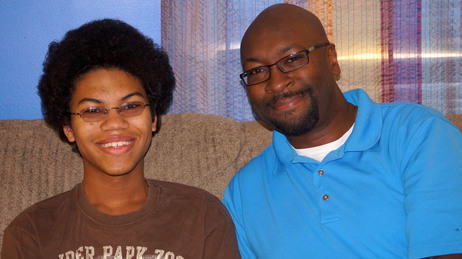When You're Mixed Race, Just One Box Is Not Enough

George Washington III and son Jordan. When George heard about The Race Card Project, he immediately thought of his children.
Since The Race Card Project is about identity, it's not surprising that many submissions deal with the question of how people choose to identify themselves. That can be more complicated for those who have two parents who do not share the same race — especially when asked to choose a particular box for race or ethnicity on an application or government form.

The U.S. Census has allowed respondents to select multiple races since 2000.
Since Washington is black, he assumed the world would also see his olive-skinned children as black. But during a routine trip to the doctor's office in Charlotte, N.C., he realized his son Jordan, 18, had his own ideas about identity.
"It was an 'aha' and an awareness moment for me," Washington says. "[My kids] know that they don't exactly fit into the, 'They are black, they are white' ... way of thinking."
George Washington III: "My Mixed Kids Have It Differently"

In 2000, the U.S. Census began allowing people of mixed race to to describe their racial makeup.
Dave Kung of St. Mary's City, Md., was grateful for that policy change, and his submission to The Race Card Project explains why.
Dave, a math professor, struggled for years over what box to check on government forms and applications. His father is Chinese. His mother is white. Picking just one box on a form, Dave says, meant choosing one race over another — and that meant denying part of his ancestry. But checking "other" as an alternative choice was also unsatisfying, he says.
Many forms and questionnaires allow
respondents to check just one box to describe their racial identity.
That doesn't sit well with many people who have written to The Race Card
Project.
Kung was in his late 20s when his 2000 Census form arrived. He already knew, before opening it, that the form would offer him a chance to check more than one "race" box.
Even so, he wasn't prepared for "how emotional that experience was," Dave says. "When I filled out my census card and was finally allowed to — correctly — check more than one box, I cried."
Source: NPR

No comments:
Post a Comment